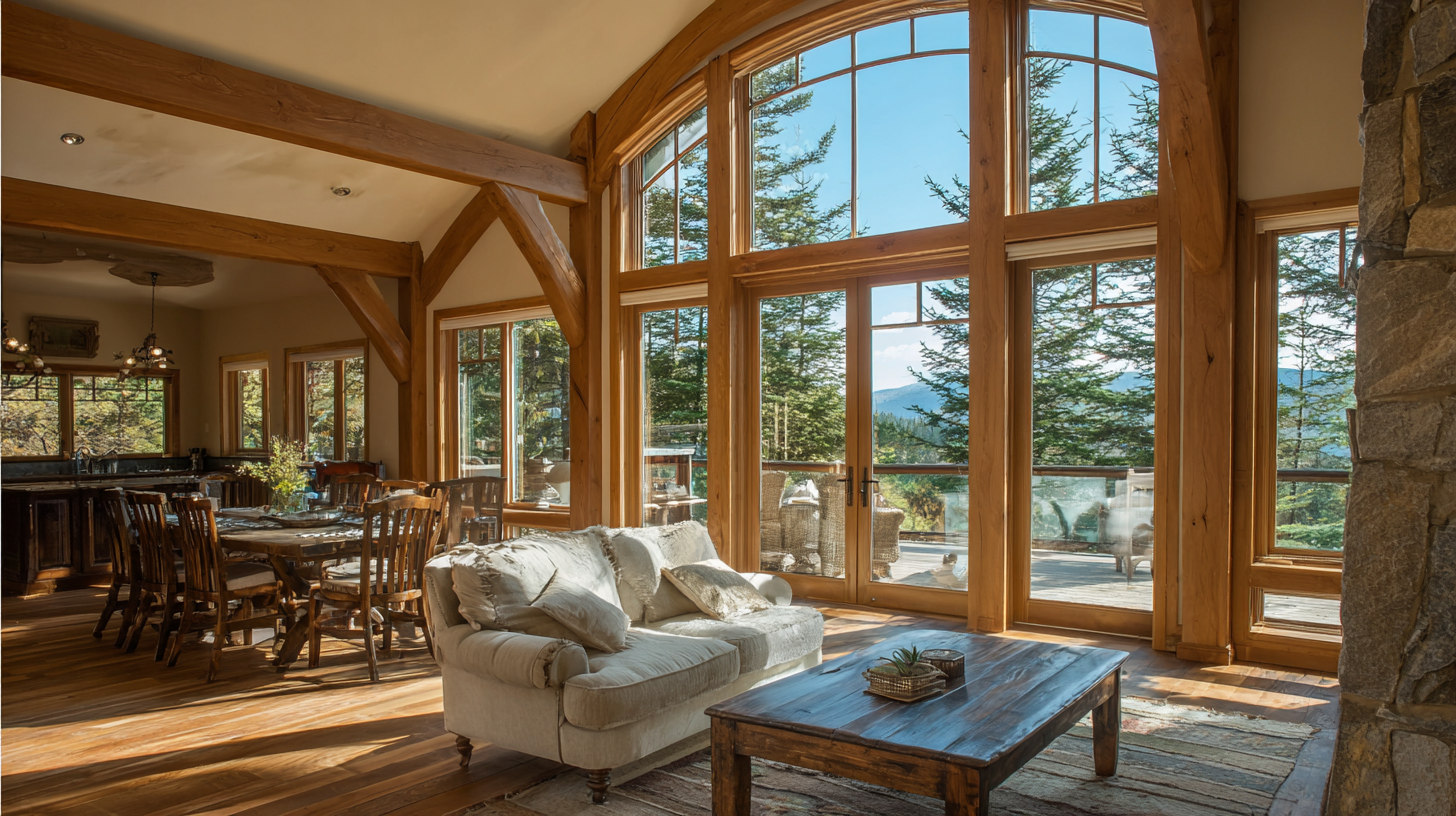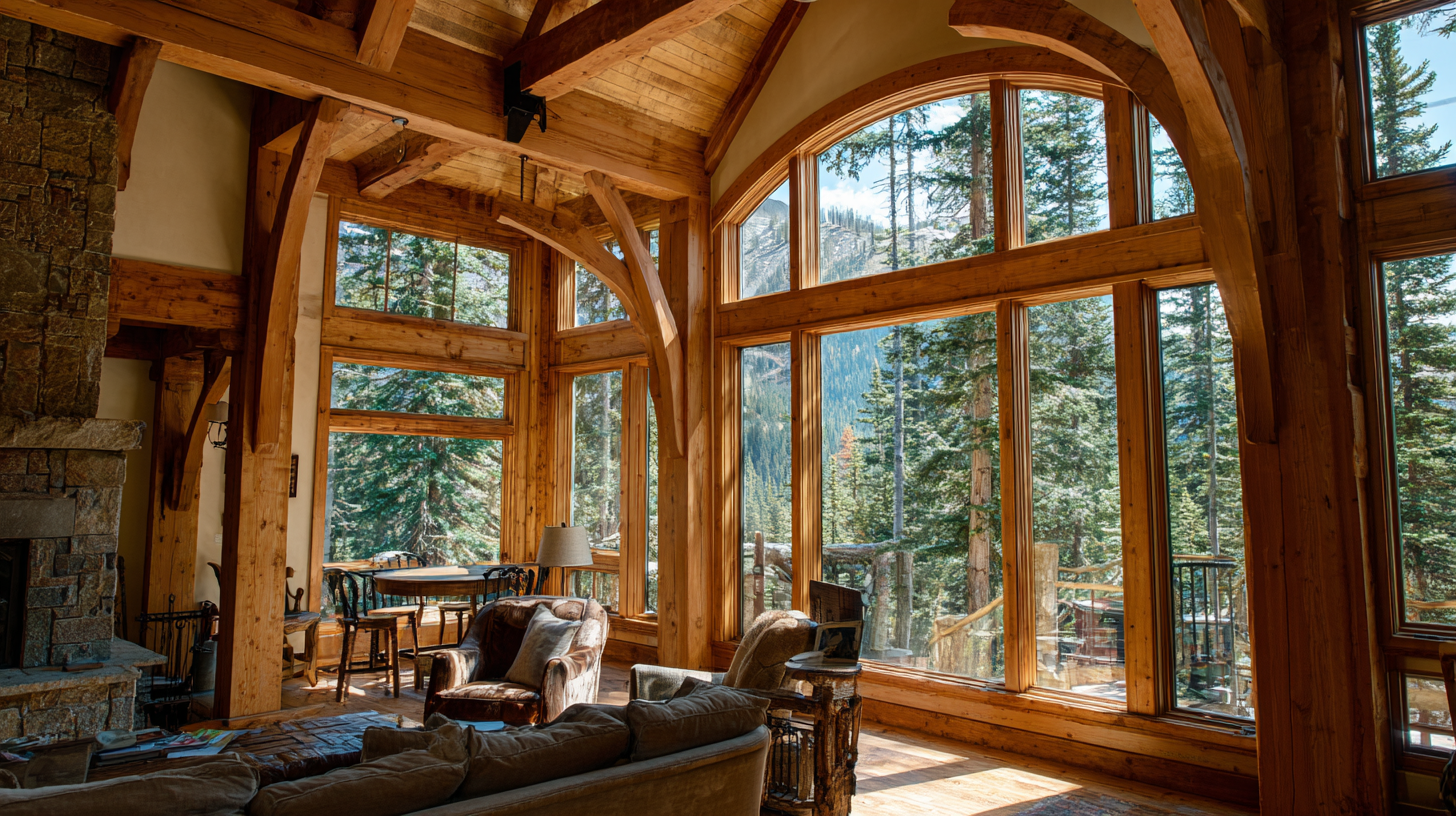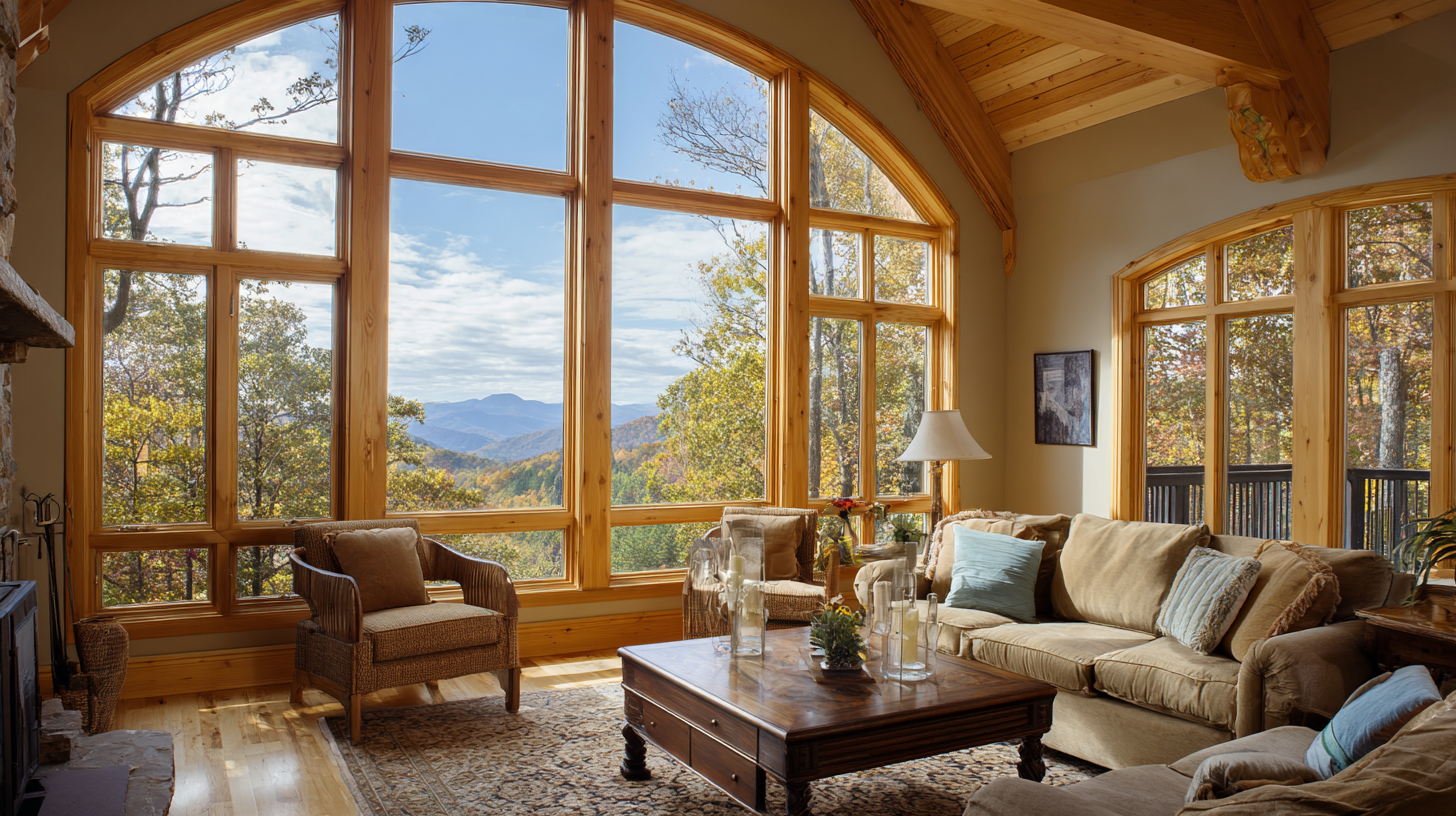In today's rapidly evolving architectural landscape, the choice between traditional window materials and innovative options can significantly impact both aesthetics and functionality. Among the various choices available, Timber Frame Windows stand out due to their exceptional blend of visual appeal and performance. This blog will delve into the advantages of Timber Frame Windows compared to traditional alternatives, exploring their superior insulation properties, environmental benefits, and enhanced durability. With a growing emphasis on sustainability and energy efficiency in modern construction, understanding how Timber Frame Windows can elevate both residential and commercial spaces is more crucial than ever. Join us as we uncover the myriad benefits that make Timber Frame Windows the preferred choice for homeowners and builders alike, setting them apart in the competitive world of window designs.

Timber frame windows are quickly gaining popularity as a sustainable choice for modern homes. Unlike traditional alternatives made from vinyl or aluminum, timber frame windows are crafted from renewable resources, making them an eco-friendly option. According to a recent report by the Forest Stewardship Council, sustainable timber construction can reduce carbon emissions by up to 60% when compared to conventional building methods. This significant reduction underscores the environmental benefits of opting for timber frames, aligning with the growing trend towards sustainable living.
When considering timber frame windows, it's essential to keep in mind their excellent insulating properties. A study conducted by the National Association of Home Builders reveals that homes with high-quality timber windows can save up to 20% on energy costs annually due to their superior thermal performance. This not only contributes to lower utility bills but also enhances overall home comfort.
**Tip:** When selecting timber frame windows, look for products certified by organizations such as the Forest Stewardship Council to ensure that the wood comes from responsibly managed forests.
Furthermore, timber frames offer aesthetic versatility, allowing homeowners to choose designs that complement their architectural style. With a variety of finishes and styles available, timber frame windows can add both value and elegance to a home, making them a wise investment for any homeowner looking to combine sustainability with style.
**Tip:** Consider using double or triple-glazed glass in your timber frame windows to further improve energy efficiency and sound insulation, enhancing the overall performance of your windows.

Timber frame windows are gaining recognition for their superior durability and insulation compared to traditional materials. Unlike standard aluminum or vinyl frames, timber frames are crafted from natural wood, which offers a unique blend of strength and flexibility. This natural elasticity allows timber to absorb shock and withstand the elements better than synthetic counterparts, making it a robust choice for homeowners looking for longevity in their window installations. Furthermore, timber frames can be treated to resist rot, pests, and weathering, ensuring they maintain their integrity over time.
In addition to durability, the insulation properties of timber frame windows are remarkable. Wood is a natural insulator, helping to minimize energy transfer between the inside and outside of a home. This leads to reduced heating and cooling costs, as timber frames can help maintain a consistent indoor temperature regardless of the weather outside. By choosing timber, homeowners can enjoy a more energy-efficient environment without sacrificing aesthetics. The combination of these advantages makes timber frame windows an excellent investment for those seeking to enhance their living spaces while prioritizing sustainability and performance.
Timber frame windows have long been celebrated for their aesthetic appeal, embodying a timeless beauty that enhances any architectural style. Their natural warmth and rich textures create a unique charm that synthetic alternatives struggle to replicate. Homeowners are often captivated by the organic, rustic feel that timber windows bring, seamlessly blending with both modern and traditional designs. Whether it’s a cozy cottage or a sleek contemporary home, timber frames offer an elegance that is hard to match, enhancing the overall façade of any dwelling.
Beyond their visual allure, timber frame windows also allow for a high level of customization, enabling homeowners to choose finishes and designs that resonate with their personal style. The diverse range of available wood species means that different colors, grains, and textures can be selected to complement existing elements of the home. This flexibility in design not only contributes to their aesthetic value but also ensures that timber windows maintain their appeal over the years, becoming an integral part of the home’s identity and an enduring choice for those looking to invest in lasting beauty.
 When considering windows for your home, the choice between timber frame and traditional alternatives often comes down to long-term savings. Timber frame windows, while sometimes initially more expensive, offer significant advantages that can lead to cost-effectiveness over time. Their excellent insulation properties help maintain consistent indoor temperatures, potentially reducing heating and cooling costs. In addition, the durability of timber frames means they require less frequent replacement than vinyl or aluminum options, further contributing to long-term savings.
When considering windows for your home, the choice between timber frame and traditional alternatives often comes down to long-term savings. Timber frame windows, while sometimes initially more expensive, offer significant advantages that can lead to cost-effectiveness over time. Their excellent insulation properties help maintain consistent indoor temperatures, potentially reducing heating and cooling costs. In addition, the durability of timber frames means they require less frequent replacement than vinyl or aluminum options, further contributing to long-term savings.
Tip: Invest in proper maintenance for timber frames. With regular care such as painting and sealing, you can extend the life of your windows, maximizing your investment in these high-quality frames.
Moreover, the aesthetic appeal of timber frames can enhance property value. Many homeowners find that the classic look of wood resonates well with potential buyers, making homes with timber windows more desirable. This increased appeal not only helps when selling but can also reflect in insurance savings, as properties with premium windows may be valued higher.
Tip: Consider energy-efficient designs and features when choosing timber windows. Look for options with multi-pane glazing to further enhance insulation and energy efficiency, ensuring that your investment pays off in lower utility bills.
When it comes to selecting windows for your home, the climate can significantly influence your decision.
Timber frame windows offer unique advantages compared to traditional alternatives, particularly in extreme climates. In colder regions, the natural insulating properties of timber help maintain indoor temperatures, reducing energy consumption. Traditional materials like vinyl or aluminum may not provide the same level of insulation, resulting in higher heating costs. Additionally, timber can withstand the expansion and contraction caused by temperature fluctuations, enhancing durability over time.
Conversely, in warmer climates, timber frames can still shine. They provide excellent ventilation and can be treated to resist moisture and pests, which is crucial in humid environments. Traditional windows, particularly those with metal frames, can absorb heat, leading to increased air conditioning costs. Moreover, timber's aesthetic appeal can enhance curb appeal, a factor that is often overlooked when considering material longevity and energy efficiency. By understanding how these window types perform in various climate conditions, homeowners can make informed decisions that balance functionality, cost, and style.




